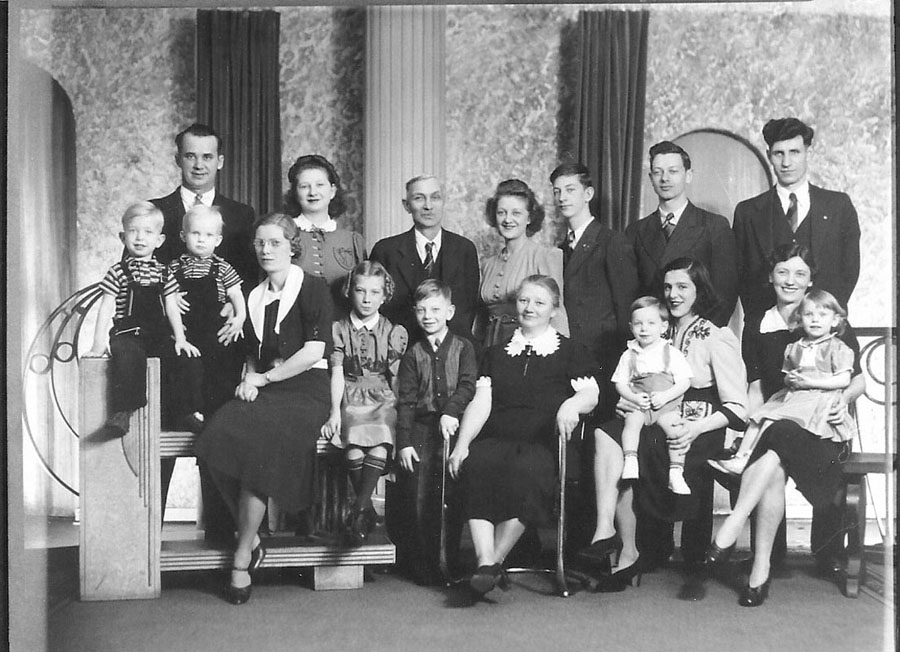Darlene (Dee) Byron Milbocker has put in writing the story of her grandparents, Jacob and Maria Link. She has graciously permitted its posting on this Blog so the larger Link and Batke families can appreciate the struggle and the strength it took for these immigrant families to make a better life for all of us.
Don Fredrick, grandson of Henry and Katherine Batke, commented on the history with the following:
“The whole story, as far as it goes, impacts us directly, our generation. But the effect, perhaps in a lesser way is important for the generation that follows ours. Origins mean something! Origins mean a great deal when we realize that our ancestors had to face all of this to migrate to America
Friedrich and Elizabeth were married in Russia
THE STORY OF JACOB AND MARIA
Written by Darlene Byron Milbocker
Granddaughter of Jacob and Maria
This is the story of Jacob and Maria Link and their escape from Russia
And so, this story is written with a composite of information from family members who have tried to piece together their grandparent’s life story! Timothy Link, son of Jacob Link Jr. did interview his Grandfather for a school project, which gave us our first bit of information. His mother, Pat Link and sister Pam Link Schoonaert, all from S. Bend , Ind. Gary is the grandson of Friedrich Link and Maria Elizabeth Knack and Gary Allegan , Michigan Medicine Hat Alberta
Quite recently, contact was made with grandchildren of the Henry Batke family, and so much was shared by them! Don Fredrick , son of Katherine Batke Fredrick gave us a wealth of information, and Elaine Engler Bush, Anna Batke Pesko, and Elaine Beaudoin have contributed greatly. Their information opened up many new avenues and filled in many gaps.
As you will see, generation after generation used the same names over and over, sometimes changing the spelling, making it very difficult to decide who is who. It can be assumed that the names were repeated so often, to remember, or possibly honor those that were never seen again.
One day, it suddenly occurred to me that I had to put all this information, such as it was at that time, into “story form”, for the sake of my descendants. So much has become available since, making original versions of the story obsolete. So once again, I attempt to document their story, with the information we now have. I have come to realize that this story may never be finished, as more information becomes available and some memories are “jogged,” making for some interesting insights into the lives of our ancestors.
ELIZABETH
Our story begins with Friedrich Link, born 1852 in Steegan , West Prussia and Elizabeth (Hopp) Link, born in Rosengart , Russia Germany , through Germany and across Germany Russia , but Grandpa Link, in his statement to his Grandson, Tim, said that they lived in Germany
The journey to Russia Black Sea region by the thousands.
 |
| Peter and Jacob Link standing; Elizabeth and Friedrich Link sitting. Photo courtesy: Bonnie Fago, date unknown |
Friedrich and Elizabeth Link moved to an area above the Black Sea known as Alexandrovsk, Ekaterinoslav. The city has changed names many times. It was Yekaterinoslav 1776-1782, re-established 1783-1797. It was Novorossiysk province of Dnepropetrovsk/Dnipropetrovsk
Their sister, Elizabeth Link was born Aug. 30, 1875 in Gerhartstal , Russia Russia
At one time, similar promises had been made to the Germans of Prussia, and a group known as the Mennonites, by Catherine II, Empress of Russia. The Mennonites had an important role in the background of the Germans who found themselves in Russia and eventually immigrating to Canada and the United States
Catherine II reigned from 1762 to 1796 as Empress. Her son Paul I, reigned in Russia Russia
Catherine the Great had been very motivated to put swampland that the royal family owned to productive and profitable use, and was informed how industrious and innovative the Mennonite farmers were. She encouraged only Mennonites to settle the region of Russia known as Chorititza, a city near the Dnieper River Russia Russia , a large wave of immigration to America Russia to North and South America .
The Dneiper River was an important route traveled by the Mennonite and Lutheran families in establishing the Dnepropetrovsk Russia and were scattered about in communities above the Black Sea, the Volga, and the Dons Rivers , the Volhynien area and Crimea . The Germans were all promised that they could:
1. Keep their own language
2. Churches
3 Have their own schools
4. Never have to serve in the military.
In 1873 a delegation of 12 Mennonites explored North America , seeking large tracts of fertile land. Canada was chosen, which promised privileges for the Mennonites, previously held in Russia , near Manitoba , Canada
l. They could keep their own language.
2. Freedom of worship
3. Control of their own schools
4. Exemption from military service


















